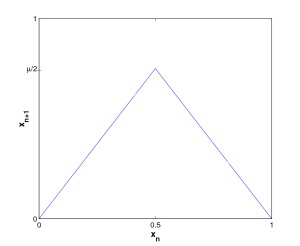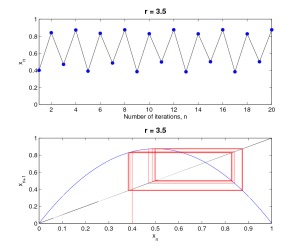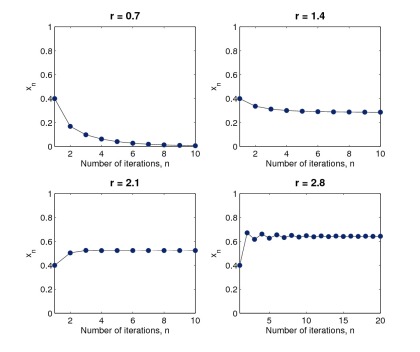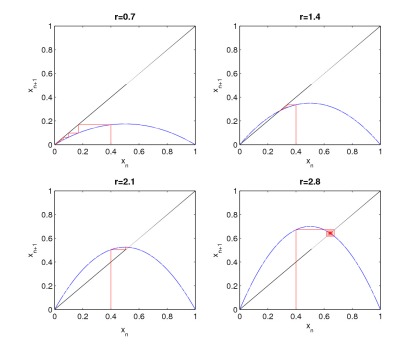In previous posts regarding chaos theory we have investigated the logistic map. In this post we’re going to be looking at a similar system known as the tent map; it is also commonly referred to as the triangle map.
The tent map is a recurrence relation, written as:
for and
.
As shown below, the graph of has maximum value
at
. The tent map is piecewise linear, because of this characteristic this makes the tent map easier to analyse than the logistic map. However, although the form of the tent map is simple and the equations are linear, for certain parameter values the map can yield complex and chaotic behaviour [1].
The logistic and tent map are topologically conjugate for and
respectively. In other words, the behaviour of the tent map for
is the same as that of the logistic map when
. The proof of this is will be looked at in future posts. First lets look to see if the tent map is sensitive to initial conditions. Here we’ll use similar initial conditions to that found in previous posts for the logistic map;
and
and
Similarly to the logistic map, we can see that the tent map is also sensitive to initial conditions. In addition to being sensitive to initial conditions, the tent map is also dependent on its parameter value , ranging from predictable to chaotic behaviour. We will explore the tent map further in the next post.
Sources:
[1] LYNCH, S. (2007). Dynamical Systems with Applications Using Mathematica (eBook). Birkhäuser Basel, 1st edition.













